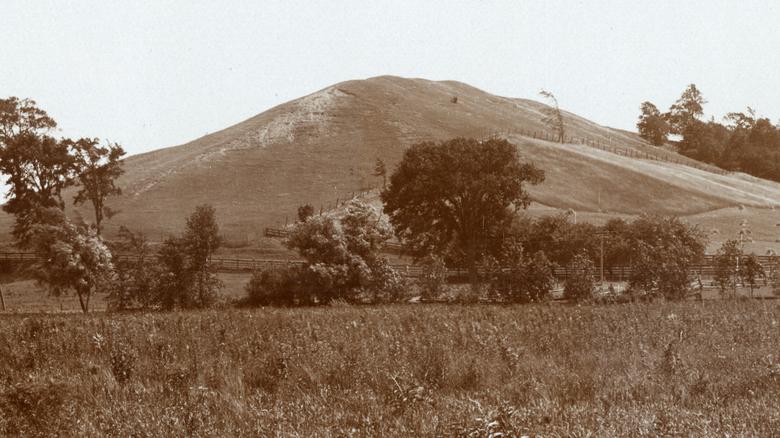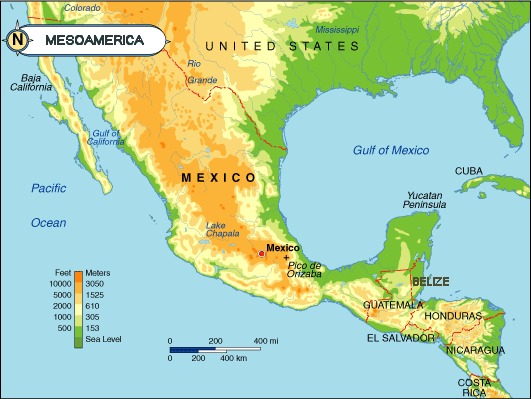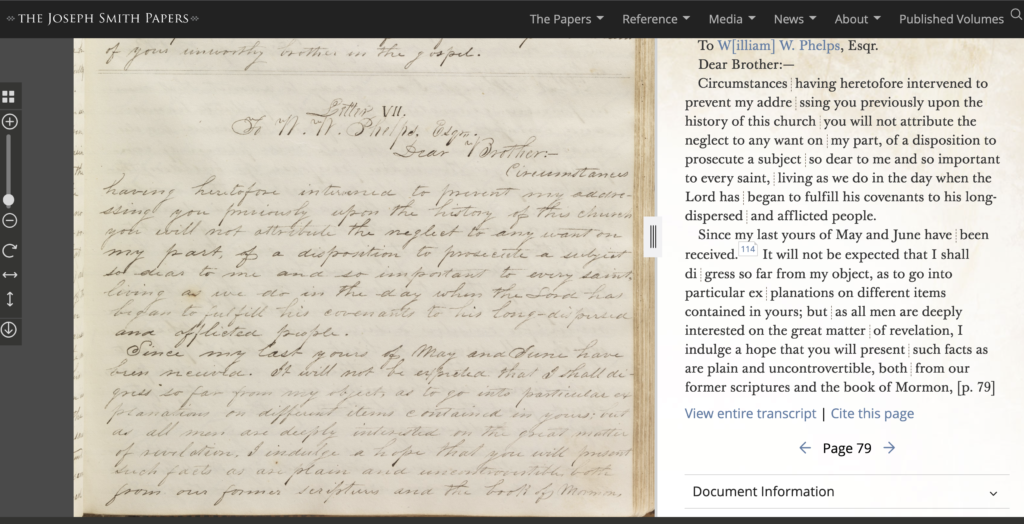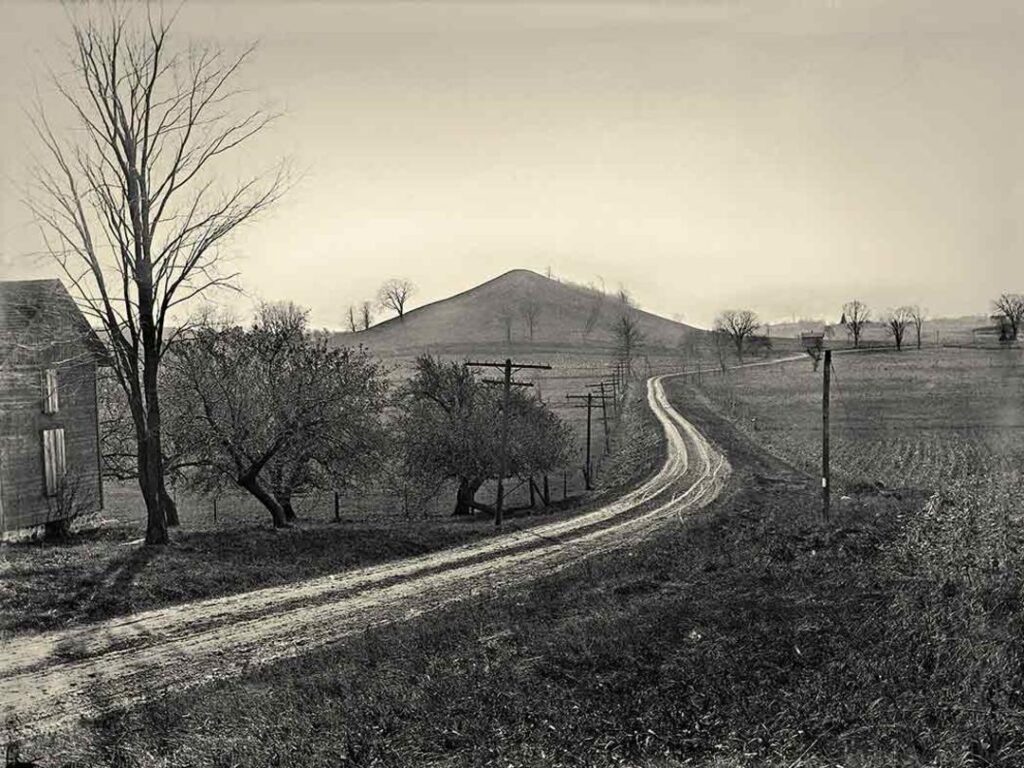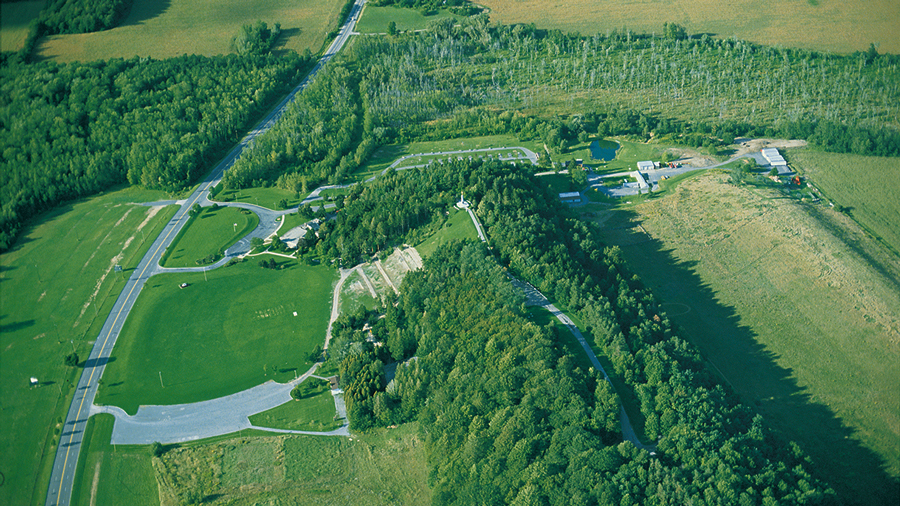I’ve always believed that the people of the Book of Mormon were located in North America — where the Hill Cumorah is located — up in the finger lakes area. I’m not a Meso-America supporter, it just doesn’t make sense to me to choose that area because of the “narrow neck of land” you see on a map. When you are down on the ground, you don’t see a narrow neck of land there. So, once again, perspective is everything. We really can’t look at a map today and assume that the narrow neck of land is Meso America.
And just because there are artifacts of people who lived in MesoAmerica, that does not mean these people were the Nephites and Lamanites of the records Mormon kept.
Recently, I read the letter Oliver Cowdery wrote to W.W. Phelps in July 1835. The letter was recorded in the Joseph Smith history ledger (JS, History, [Dec. 1834–May 1836?]) as Letter VII. (see Historical Introduction)
Part of that letter is copied here (the part where Oliver gives a description of the land where the Book of Mormon took place — upstate New York)
Oliver Cowdery, “Letter VII,” July 1835
Letter VII.113
To W[illiam] W. Phelps, Esqr.
Dear Brother:—
Circumstances having heretofore intervened to prevent my addressing you previously upon the history of this church you will not attribute the neglect to any want on my part, of a disposition to prosecute a subject so dear to me and so important to every saint, living as we do in the day when the Lord has began to fulfill his covenants to his long-dispersed and afflicted people….
But a long time previous to this disaster it appears from his own account, he foresaw approaching destruction. In fact, if he perused the records of his fathers, which were in his possession, he could have learned that such would be the case. Alma, who lived before the coming of the Messiah, prophesies this.121 He, however, by divine appointment, abridged from those records, in his own style and language, a short account of the more important and prominent items, from the days of Lehi to his own time, after which he deposited, as he says, on the 529th page, all the records in this same hill, Cumorah and after gave his small record to his son Moroni, who, as appears from the same, finished, after witnessing the extinction of his people as a nation. It was not the wicked who overcame the righteous; far from this: it was the wicked against the wicked, and by the wicked the wicked were punished.—122 The Nephites who were once enlightened, had fallen from a more elevated standing as to favour and privilege before the Lord in consequence of the righteousness of their fathers, and now falling below, for such was actually the case, were suffered to be overcome, and the land was left to the possession of the red men, who were without inteligence, only in the affairs of their wars; and having no records, only preserving their history by tradition from father to son, lost the account of their true origin, and wandered from river to river, from hill to hill, from mountain to mountain, and from sea to sea, till the land was again peopled, in a measure, by a rude, wild, revengful, warlike and barbarous race.— Such are our indians. This hill, by the Jaredites, was called Ramah: by it, or around it pitched the famous army of Coriantumr their tents.123Coriantumr was the last king of the Jaredites The opposing army were to the west, and in this same vally, and near by, from day to day, did that mighty race spill their blood, in wrath, contending, as it were, brother against brother, and father, against son. In this same spot, in full view from the top of this same hill, one may gaze with astonishment upon the ground which was twice covered with the dead and dying of our fellow men. Here may be seen where once sunk to nought the pride and strength of two mighty nations; and here may be contemplated, in solitude, while nothing but the faithful record of Mormon and Moroni is now extant to inform us of the fact, scenes of misery and distress—the aged, whose silver locks in other places and at other times would command reverence; the mother, who in other circumstances would be spared from violence; the infant, whose tender cries would be regarded and listened to with a feeling of compassion and tenderness; and the virgin, whose grace, beauty and modesty, would be esteemed and held inviolate by all good men and enlightened and civilized nations, alike disregarded and treated with scorn!—in vain did the hoary head and man of gray hairs ask for mercy; in vain did the mother plead for compassion; in vain did the helpless and harmless infant weep for verry anguish, and in vain did the virgin seek to escape the ruthless hand of revengeful foes and demons in human form—all alike were trampled down by the feet of the strong, and crushed beneath the rage of battle and war! Alas, who can reflect upon the last struggles of great and populous nations, sinking to dust beneath the <hand of Justice and retribution without> weeping over the corruptions of the human heart, and sighing for the hour when the clangor of arms shall no more be heard, nor the calamities of contending armies no more experience<d> for a thousand years? Alas, the calamities calamity of war, the extinction of nations,124the ruin of kingdoms, the fall of empires and the disolution of governments! O the misery, distress and evil attendant on these! Who can contemplate like scenes without sorrowing, and who so destitute of commiseration as not to be pained that man has fallen so low, so far beneath the station in which he was created?
In this vale lie commingled, in one mass of ruin the ashes of thousands, and in this vale was destined to consume the fair forms and vigerous systems of tens of thousands of the human race—blood mixed with blood, flesh with flesh, bones with bones and dust with dust! When the vital spark whichanimated their clay had fled, each lifeless lump lay on one common level—cold and inanimate. Those bosoms which had burned with rage against each other for real or suposed injury, had now ceased to heave with malice; those arms which were, a few moments before nerved with strength, had alike become paralized and those hearts which had been fired with revenge, had now ceased to beat, and the head to think—in silence, in solitude, and in disgrace alike, they have long since turned to earth, to their mother dust, to await the august, and to millions, awful hour, when the trump of the Son of God shall echo and reecho from the skies, and they come forth, quickened and immortalized, to not only stand in each other’s presence, but before the bar of him who is Eternal!
“History, 1834–1836,” p. 79, The Joseph Smith Papers, accessed July 4, 2021, https://www.josephsmithpapers.org/paper-summary/history-1834-1836/83
[pdf-embedder url=”https://www.deilataylor.com/wp-content/uploads/2021/07/D1_Map2_FingerLakes_web.pdf”] [pdf-embedder url=”https://www.deilataylor.com/wp-content/uploads/2021/07/D3_Map1_-Overview-1833-1834.pdf” title=”D3_Map1_ Overview 1833-1834″]
Oliver Cowdery, “Letter VII,” LDS Messenger and Advocate, July 1835, 1:155–159 .
Latter Day Saints’ Messenger and Advocate. Kirtland, OH. Oct. 1834–Sept. 1837.

